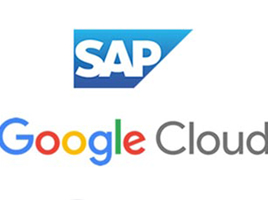ERP News – worldwide – erpnews.com – Congratulations! You’re one of the many lucky readers looking to upgrade your current ERP system to something more innovative and productive. But of course, you have some questions; how to minimize costs being a big one. Implementing a new ERP system can have a huge impact on your company. Don’t waste your time and money with a solution that doesn’t work for you. Read below for our top 5 ways to minimize ERP project costs within your organization.

1. Plan it out
Because ERP projects are such a time and cost sensitive investment, it is crucial for organizations to implement a project management plan for their ERP software upgrade. The plan should work to establish major project milestones and delivery dates, set deadlines, and clearly indicate everyone in the organization’s roles to ensure that deadlines are being met in a timely and effective manner. If your implementation team and ERP consultant/partner know their jobs you should be able to keep time and cost under control.
2. Do your research
Before any ERP upgrade, it’s important to find an experienced and flexible partner who is willing and able to find your organization’s best fit. If your business is built up of multiple different divisions it may be smarter to go through a more phased implementation rather than one huge rollout. It’s important to express these needs with your ERP partner to ensure that your project runs effectively the first time through and doesn’t cause your enterprise more headaches and training costs than needed. Before every implementation project, we provide customers with an ERP technology assessment to find the best fit product wise and best implementation plan for your business. Two major keys for success. Don’t let your business get roped into the one size fits all mentality. Know what you’re getting yourself into in your implementation and save money in the long run.
3. Simplify
Customizable ERP software packages are great options for businesses looking to make a switch, however sometimes these customizations can be pricey and unnecessary. Keep communication open with your implementation partner to ensure that they aren’t overstating capabilities and understating the need for customization just to seal the deal. Customizations are great to have as an option when your organization outgrows its current state without needing a complete renovation, however adding on a bunch of fancy new bells and whistles right off the bat can really hike up the price tag of your ERP project. Communicate your needs with your partner first to determine what your business really needs in this project before you start the implementation.
4. Calculate ROI
Do you really need to invest in a brand new ERP software system? Or could your current pain points be solved with a customization or minor upgrades? If you do need to upgrade to a new software, what will be your Return on Investment (ROI)? This is a crucial step that can often be forgotten, read more on how to determine the ROI on a new ERP system.
5. Negotiate
In regards to licensing software, be sure to only buy into what is required for your company’s needs. Talk with your partner to ensure that the necessary functionalities and architecture that you need aren’t driving up your cost and if they are, negotiate to see where you could lower the price to be more budget friendly. In terms of professional service rates training is a must for any ERP implementation project, without this crucial step, the odds of your project reaping all the benefits are low. That being said, there is room to save money on professional service rates without sacrificing quality. Negotiate future rates for customizations and upgrades up front to ensure you are receiving the lowest possible ERP Implementation with benefits to come.




